Alto Baudó: Colombia’s forgotten corner
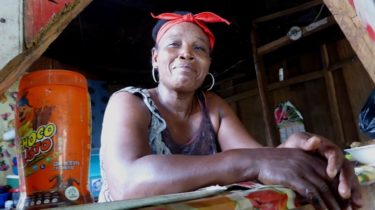
by Steve Hide
This post first appeared as an article in The City Paper in 2016.
For other posts on Colombia’s Chocó see my posts
– Lost in the Darien Gap
– Killed in the Darien Gap
– Nuqui, on the Chocó coast
Can we really be there? I wonder as our motorboat pulls over to the side of a river deep in the Chocó. I was expecting a town, but there is none in sight, just a muddy riverbank.
I check again with the boat driver. ´Yes, this is it, time to get off,´ he says. I crane my head to see a few run-down wooden houses and a creek with canoes, some half-filled with water.
This is the start of what is possibly Colombia’s most abandoned communities: Pie de Pató.

The upper Baudó River is a long day´s travel from the main local city of Quibdó. I left at 4am to get two buses and a boat here and now, standing by the strong brown water flow sandwiched between jungle-clad hills, I am wondering if I am in the right place.
The words, read long ago, of Joseph Conrad and VS Naipaul crowd into my head: the powerful tropical river taking us back in time to the beginning of the world, where you are an intruder, but somehow familiar, in this Garden of Eden you had known at some time, somehow forgotten or ignored, but was always still there. And a ringing note of caution from Apocalypse Now, Conrad´s dark tale updated and in technicolour: `Never get out of the boat´.
Too late. The other disembarking passengers already hopping over an old wooden canoe separating us from the shore and picking their way up to a thin concrete walkway that heads inland through a scruffy banana plantation. I grab my bag and follow.
Not really Duck Pie
The first thing to realise about Pie de Pató is that it does not mean Duck Pie. Those will a slightly better grasp of Spanish might think it means Duck Foot. And a Spanish-speaking geographer, with knowledge of the Chocó’s rivers, might imagine it means the ´foot´ as in the ‘headwaters of the Rio Pató’. But that’s not true either.
Only when you arrive there and look closely at the terrain do you realise that Pie de Pató is on the River Baudó, a large healthy river carving its way through hills westward to the Pacific Ocean. The Rio Pató is actually 2 hours east walking over a steep jungle ridge. The remarkable thing is that the Rio Pató flows into the Atrato River which disgorges its frothy brown log-strewn waters into the Atlantic coast. Here then is some sort of magic pivot point between the two greatest oceans, a point that the locals are keen to point out.
´You see we could have had the Panama Canal right here, ´ explains Emilio, a local banana grower with teeth like piano keys (the white ones) who seems to be the town’s unofficial tour guide. He stubs a brown toe in the brown soil. I imagine he is imagining a glass and steel skyscraper city raised right here in Pié de Pató, not further north in neighbouring Panama, territory which Colombia lost through US intrigue over the canal plans.
Whether dredging the Pató and Baudó Rivers and cutting through 12 kms of hillside would have been easier than building the Panama Canal with all its huge locks is an interesting discussion point for engineers, though unfortunately 100 years too late. Not that the Choco Canal never got off the starting blocks, enterprising villagers as early as the 1700s were cutting small channels to unite the Pacific and Atlantic rivers and poling cargoes of cacao over the watershed during the wet season.
The Internet is full of Colombian inter oceanic canal conspiracy theories some harking back 150 years, when the first proposal was made for a Chocó canal, with one plan (from the 1970s) suggesting nuclear bombs to blast a marine highway across the peninsula.
A lot of bananas, but no cash
Back in Pie de Pató though this is all seems like pie in the sky, in a town with houses rotting where they stand, no clean water supply, a broken health post, no supermarkets, no obvious way to make a living. ´Hay mucho platano, pero no hay plata,´ says Emilio: we have bananas but no money.
That anyone at all lives in this tropical backwater is something of a surprise, but in fact there is a quite large population – over 30,000 people – widely spread over the upper Baudó watershed, which includes dozens of large tributaries with clear mountain headwaters, territory mostly occupied by Embera indigenous since millennia. The larger Afro-Colombian community came later as cimarrones, escaped slaves, fleeing to the Pacific lowlands and villages of their descendants dominate the main river today.
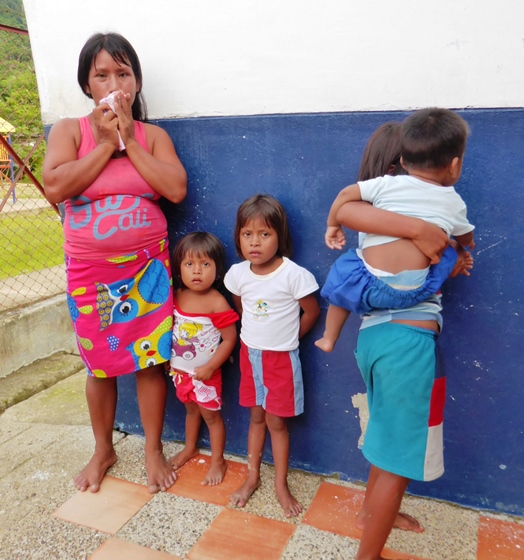
Embera Dobida indigenous
For arriving cimarrones this remote valley must have been paradise. But the cloak of remoteness that was once protected is now a burden as there is still no easy way in, or out. The long river route in – the one I took- is long and arduous and for many locals too costly.
It also runs the usual gauntlet of Colombian armed groups such as the ELN guerrillas which mark the riverbanks with their red and black flags, and their enemies the neo-paramilitary Autodefensa Gaitanistas which spray-paint the walls in the main transit towns of Istmina Puerto Meluk. Anyone crossing these lines runs a risk, as in these parts of Colombia even the innocent can be found guilty by where they live or who they relate to.
So for reasons of cost and safety, many people still choose to walk the old trail which is that is a 12-km slog to the Rio Pató to catch a motor-canoe to Quibdó. Emilio and his friends point out the path which ascends the rugged hill behind the town.
´Where are the mules?´ I ask. Too steep for mules, they say. This seems improbable, given Colombian mule´s ability to clamber up the most god-forsaken mountain pass. But other people in the town I talk to confirm the impossible steepness of the trail.
Then to my amazement Emilio and his friends are laughingly try to tell me that the community still use sillateros in Pie de Pató, today, in the 21st century, a colonial tradition that on the very steepest climbs people would carrying paying passengers in a chair – silla – strapped to their shoulders. It was a backbreaking trade declared inhuman by colonial administrators back in the 1700s but persisted in pockets of Colombia until well after independence. And still a mode of transport in the Alto Baudó today.
Emilio’s tone is serious now. He waves his hand towards the serrania bathed green and gold the evening sun. ‘This is how we live here, there are no planes landing here. We still carry people on our backs.´
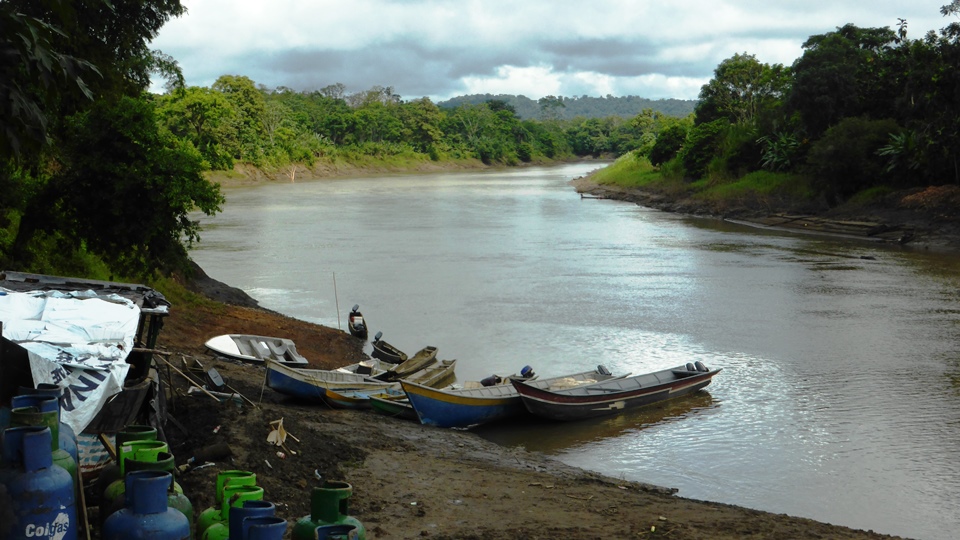
No easy access
Transport is definitely a sore point in the town, even more so when an army helicopter clatters overhead, bringing supplies to the nervous platoon of soldiers that routinely trudge through the town.
´Funny that they send helicopters to bring soldiers in and out but when people get sick here they have to travel by river and bus for 10 hours to get to the hospital,´ says someone with a wry smile.
Of course as in many parts of Colombia there are fine paper plans to connect the town to rest of the country – the Pacific Way they call it – but nothing has been built, except perhaps a few kilometres of cleared jungle.
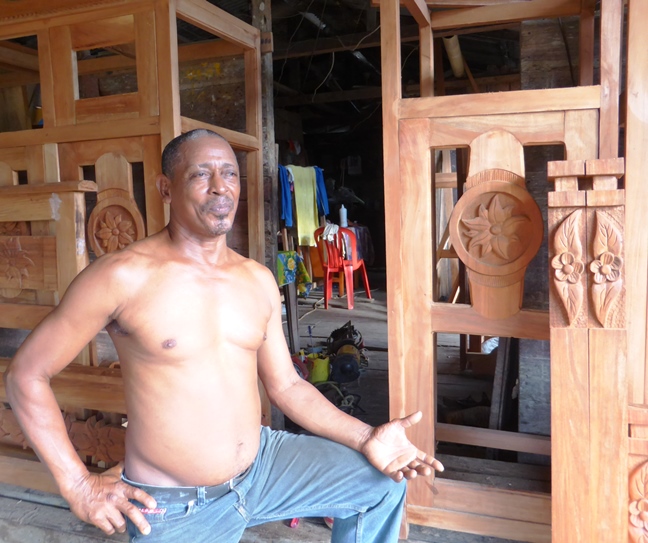
Someone tells me the road is on hold because the whole of the Chocó is a nature reserve, which seems ironic considering the state seems to tolerate a massive invasion of heavy digging machinery into all corners of the department to rip up rivers and forest in quasi-legal mines and on every muddy road head there are dark-eyed mestizo Colombians from the interior of the country stacking their trucks with illegally-cut timber.
I conclude that the ´we don´t built good roads to protect nature´ argument is completely bogus. More likely the policy is ‘let’s keep the Choco cut off so we can pillage it as fast as we can and no-one will notice.’ The is a policy, of course, backed up with deadly armed force in the form of multiple armed groups who keep communities locked down to ease the flow of illegal products – gold, timber, cocaine, wildlife, trafficked humans – north to Panama and beyond.
I ask an Embera indigenous guy, visiting the town, where the worst place for violence is in the area. ´Everywhere,´ he says simply. ´It’s all bad´. Indeed, the Baudó River is repeatedly flagged – recently at a press conference by the UN in Geneva – as a hotspot for conflict, victimisation of civilians, and forced displacement.
Life in the backwater
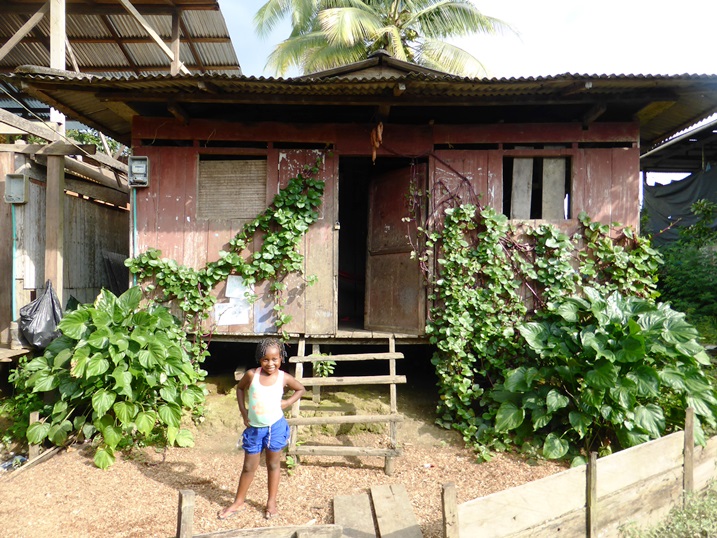
For now though, the small town seem quiet with kids playing in the muddy pools of water and, at sunset, the town turning out to pasear, the Latin tradition of an evening stroll, though in this case over a circular route of concrete walkway that winds its way through a few hundred meters in the town centre, if you can call it that.
After a few cold beers I retire to the hotel, a wooden two-story building that looks and rocks like a boat, with cosy cabin-like rooms with a simple rough-hewn bed and, luckily, a mosquito net. In a basic bathroom is a large spider the size of my hand, which I notice with a mix of horror and fascination that is grooming itself not unlike a cat, meticulously passing various legs and appendages over its mouth parts to clean and organise the bristles. I realise all spiders probably do this, it is just that most are not large enough for us to notice. I decide to leave it alone, but back in my room carefully tuck the bed net around the mattress to keep out unwanted visitors.

At midnight the town generator is shut off, and the hotel is plunged into a velvet darkness and silence except for the chirp of bugs and coughing of geckos. The morning dawns damp and drizzly, and from the hotel balcony I can see an Embera woman, bare-breasted and bare-footed, breaking logs with an axe. Whack, whack, whack, the axes splits the logs just inches from her toes which she uses to steady the logs on the soft earth.
Embera and Afro-Colombian families seem to coexist in the town, keeping to their own social spheres, though occasionally there are mixed race couples and offspring. It is harder, though, to speak to the Embera. They seem shy and only the older men are willing to describe their lives up the river, and only then in general terms.
After just a day in the town everyone know me, and I have established my routine of the bread shop for breakfast and coffee, a small restaurant for lunch and dinner (chicken or fish with beans and rice) and a cold beer spot for a sundowner. To say I feel welcome is something of an understatement. Kids run up and grab my hand, or follow me like a shadow. Everyone smiles and greets, even the town toughs, with their baseball caps and regaton music on their smartphones, make room to pass on the concrete walkway.
I am in no rush to leave, but after two nights it is time to board the boat. ´Come back, bring the family,´ someone shouts. ´Sure, I´ll bring the suegra. And leave her here,’ I shout back. There are hoots of laughter from the riverbank.
As the canoe pulls out into the river stream, I sit there on the wooden seat somehow punch-drunk in the sensation that I have struck some cultural motherlode, having arrived at this improbable bend in the river that somehow straddles the world’s two great oceans and the past and future of Colombia. And the Trinidadian writer VS Naipaul is whispering in my ear: the land takes you back to what was there a hundred years ago, to what has always been. And what in Pie de Pató, is still there.
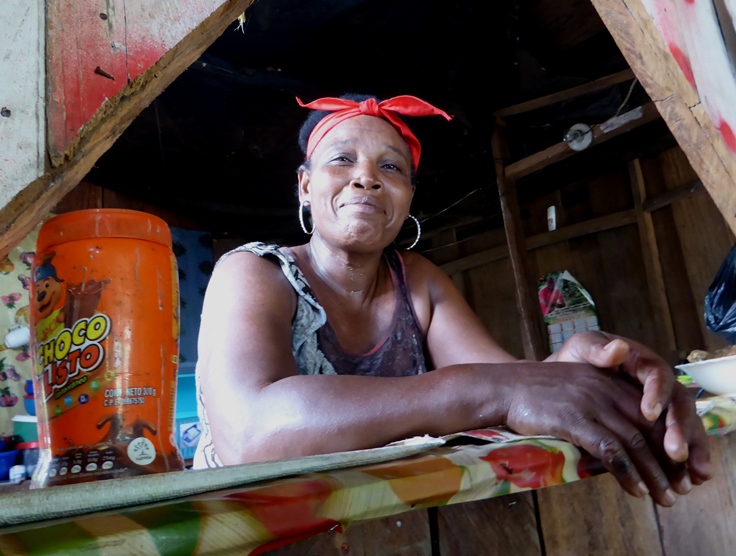
PRACTICAL STUFF
There is not much info on Alto Baudó on the internet, but you can find some great pictures and stories from French photojournalist Nadège Mazars here.
A WARNING: At time of writing (May, 2016) the Rio Baudó is home to the ELN guerrillas and, in some towns, the AGC neo-paramilitary group, and is a transit point for cocaine and illegal arms traffic. Any visit should be done with great caution, preferably at the invite of someone living in the zone (and preferably accompanied by them too). It is quite possible for travellers to make these contacts in Quibdó or Istmina, the main cities along the way. Proceed with great caution, act like a tourist, tell everyone your plans, be careful where you take your camera out.
There is falciparum (cerebral) malaria there, so bring good repellent and mossie net, wear long trousers at dusk.
Travel
– by air to Quibdo, the main city of the Chocó. there are daily flights from Bogotá and Medellin, with local airlines SATENA and Easyfly. If you book ahead, or off-peak, can be cheap (US$100 return).
Avoid Mondays and Fridays, tickets are usually booked out (or more costly). There are plenty of cheap hotels in Quibdo.
– Bus Quibdo – Puerto Meluk. You need to leave early from the Terminal de Transporte in Quibdo (like 5am). Buses leave when they are full, just jump on and pay on board. Cost is US$10 to Puerto Meluk. Trip takes 5 or more hours, last 3 hours is over bad dirt road, very shaky (driver gives out sick bags). Passes through nice jungle. Or you can get a bus Quibdo-Istmina (2 hours, US$5) and get a pick-up truck to Pto Meluk, can be faster than the bus.
– Boat Puerto Meluk – Pie de Pató. The river dock at Pto Meluk has a small office where you can buy tickets for boats and canoes going upriver to Pie de Pató, or downriver to Pizarro on the Pacific Coast. Heading upriver, you can catch the slower canoe with 40Hp motor (takes around 3 hours) for US$20 or maybe there is a voladora (`flyer´) launch with a 75Hp that takes 2 hours or less, might cost more. There are several small hotels in Pto Meluk (a nice new one on the road in) and plenty of cheap restaurants. In Pie de Pato there is one guest house the Residencia Padilla, costsUS$ 7 a night, and one or two restaurants.
What to bring
Torch, mossie repellent, bed net, sheet liner to sleep (beds are a bit basic), swim stuff, hat etc.
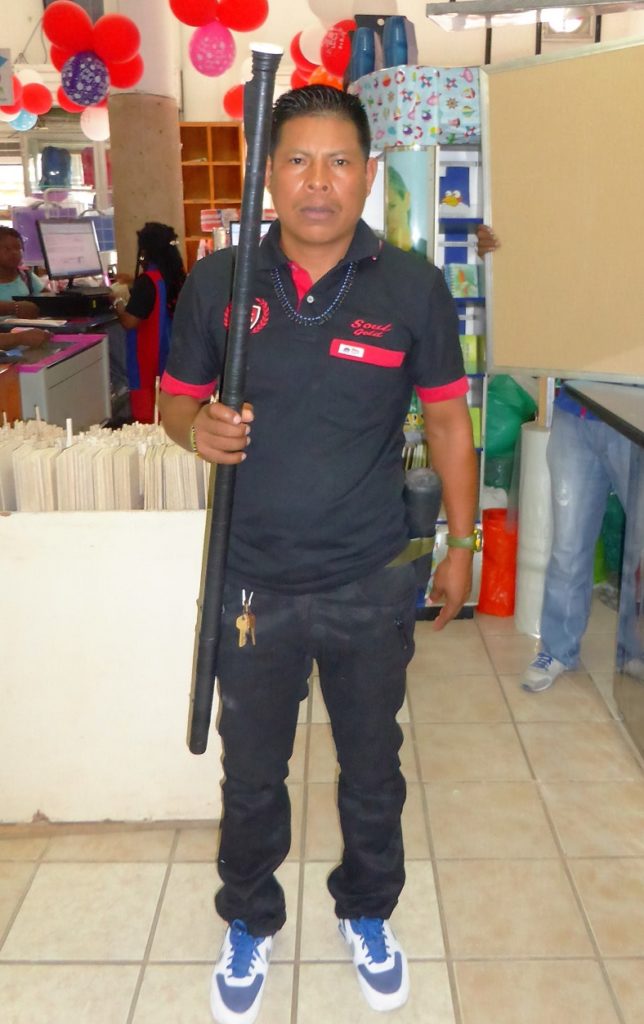
Embera hunter with blow pipe, which he still uses. 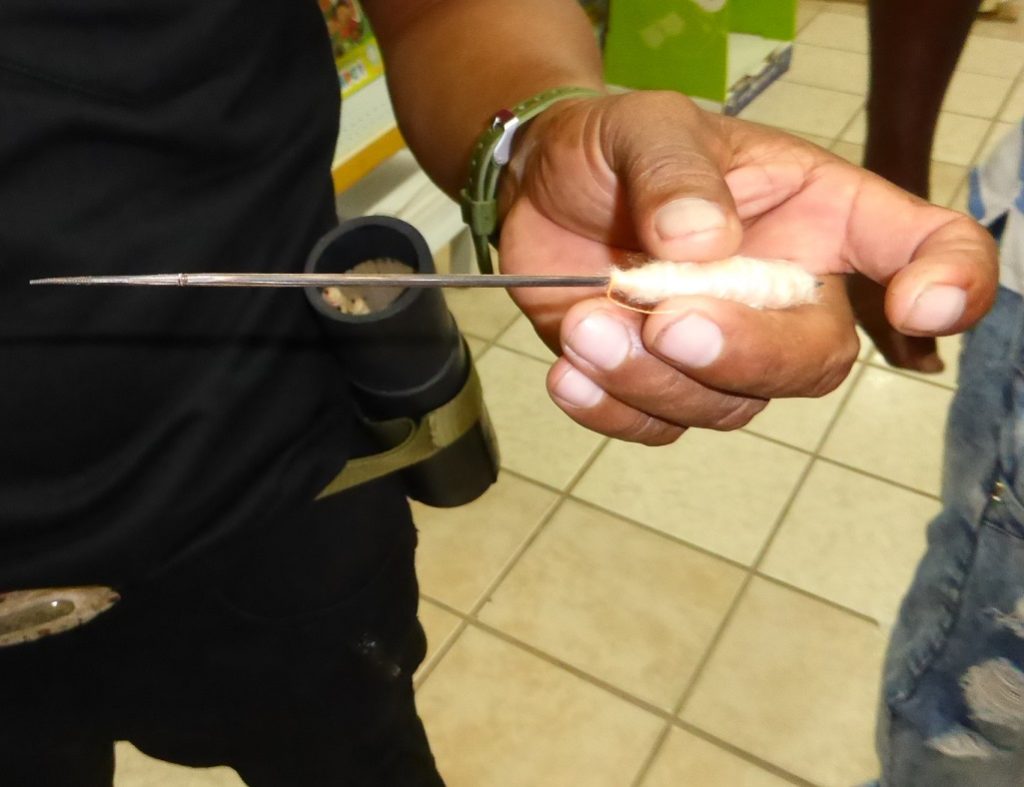
Cotton and palmwood poison dart, which uses frog poison (curare)

